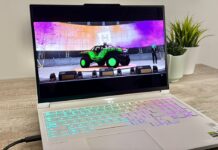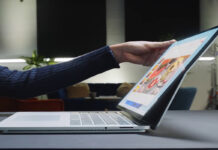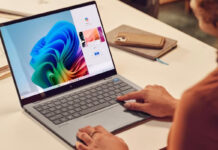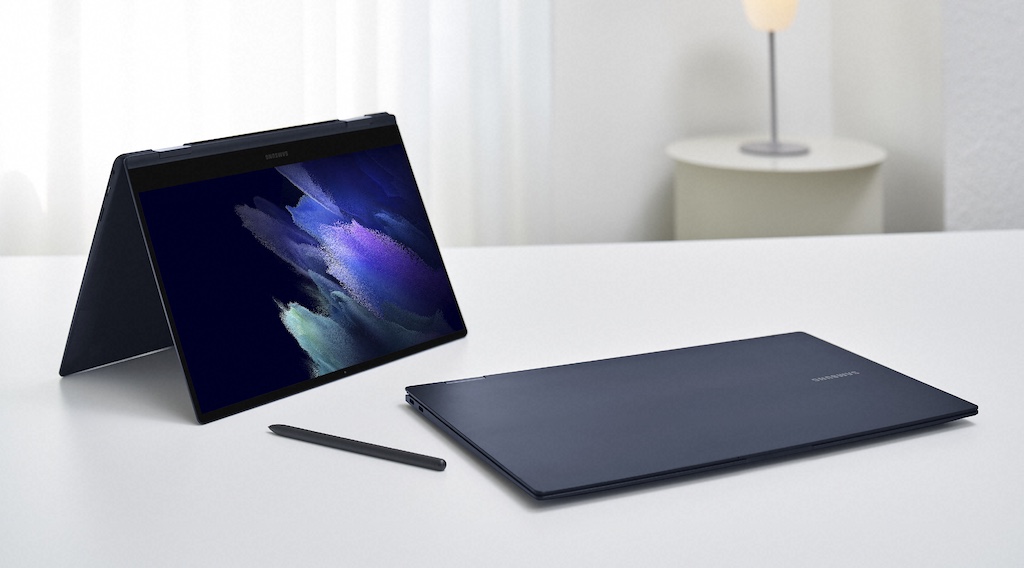
Samsung is releasing three variants of its new Galaxy Book (available for preorder from Best Buy Canada), bringing a different look and feel to its laptops that promises to be more versatile.
The three models are the flagship Galaxy Book Pro360, along with the Galaxy Book Pro and Galaxy Book. These are very thin and light devices, all of which run on Windows 10, and come with a number of features that set them apart. While sharing the same nomenclature, they’re pretty unique in how they work.
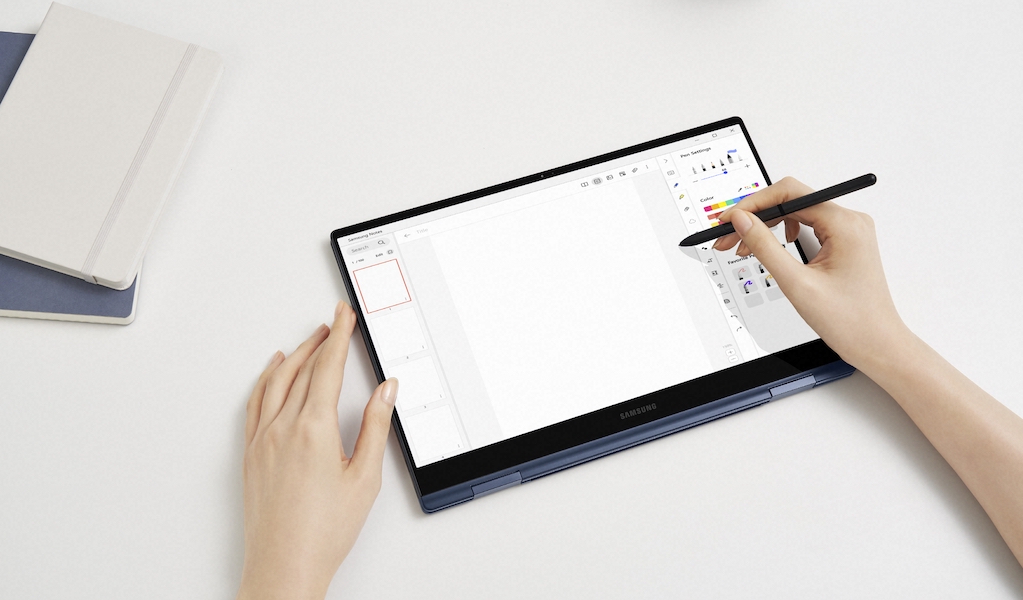
Galaxy Book Pro360
Starting with the one that stands out the most for its design, the Galaxy Book Pro360 hints at that in its name. As you can probably guess, it flips 360-degrees, letting you view the screen from just about any angle. Whether you pitch it like a tent and prop it up, or lay it flat for you to hold as a tablet, it’s got the kind of mobility available in other 2-in-1 convertible laptops.
It’s also pretty loaded inside and out. It runs on an 11th-gen Intel Core processor with Intel Iris Xe graphics. The Intel Evo platform is supposed to help make the device more efficient from top to bottom. Given that this laptop is as thin as the Galaxy S21 Ultra smartphone, it’s packing a fair bit to work with. You get two USB-C ports, one of which is Thunderbolt 4 for blazing fast transfer speeds. But just as importantly, it can support two 4K monitors from that one port. Or an 8K monitor, should you want that.
On the other side, you get another USB-C port, along with a headphone jack and microSD card slot. Why microSD over regular SD? Simply a matter of saving space for something this thin. The Galaxy Book Pro360 comes in both 13.3-inch and 15.6-inch (1920 x 1080) AMOLED screen sizes. They are touchscreens, and either size comes with an S Pen in the box. It’s the only Galaxy Book of the three models that gets pen support.
It’s also the only one supporting 5G, albeit just the smaller of the two Galaxy Book Pro360s. The Galaxy Book Pro is the same, only it uses LTE rather than 5G. The colour options do differ slightly, in that the Pro360 comes in mystic navy and mystic silver.
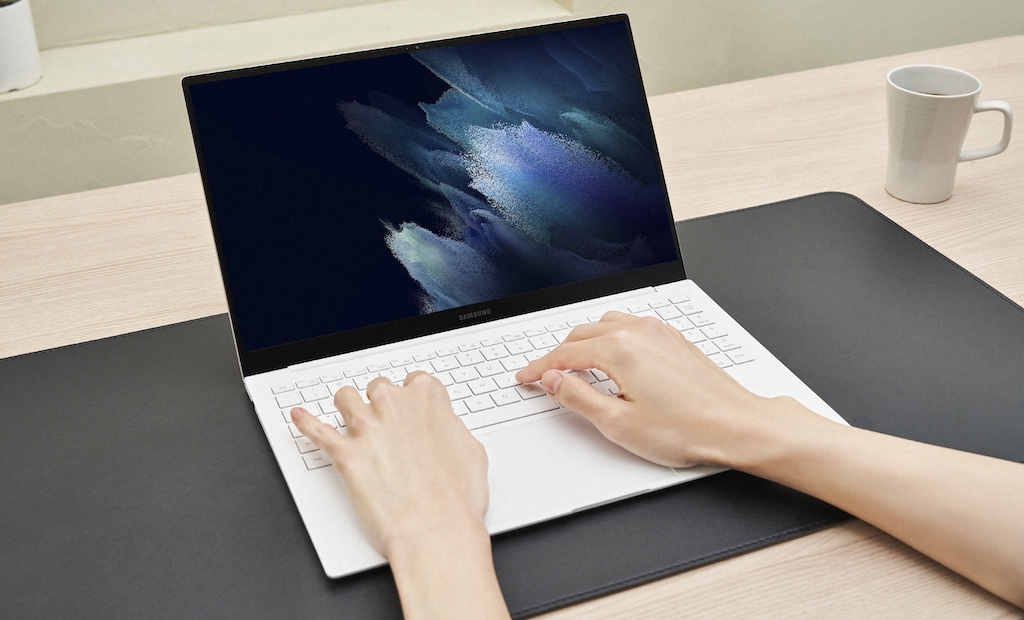
Galaxy Book Pro and Galaxy Book
Off the bat, these two bear similarities in that they literally don’t bend backward. They’re straight up laptops—still very thin and light. The 13.3-inch Galaxy Book Pro weighs less than two pounds, and is only 11.2mm thin. The entry-level Galaxy Book is more modest at 15.4mm thin, but also only comes in 15.6-inches, making it svelte for its size. Neither of these have touchscreens, so no stylus input here.
Samsung kept only Intel Core processors in the Pro, while the standard Book will get Pentium and Celeron variants as well. The two models do share some specs, and differ in others. For instance, the Pro gets a USB-C port with Thunderbolt 4, whereas the other Book doesn’t. HDMI ports are available on both, in case you want to use them for external monitors. Samsung’s Pro keyboard is built into all three models, making typing sound quieter and more satisfying. The larger trackpad is always a bonus, too.
The 65W charger that comes with all three Galaxy Book models released here is supposed to be universal. Basically, you can use it to charge all your devices and get the proper throughput with anything you plug in. If it’s a Galaxy smartphone or earbuds, the charger will charge them quickly.
Configurations also vary in storage and memory. It’s only 8GB of RAM for all three models. Internal SSD storage goes up to 1TB for the Pro models, while the regular Book maxes out at 512GB. AKG-tuned speakers, like those in the Pro360, are in the Pro as well, but not the Book.
The Galaxy Book Pro comes in mystic blue and mystic silver. The Galaxy Book comes in mystic silver.
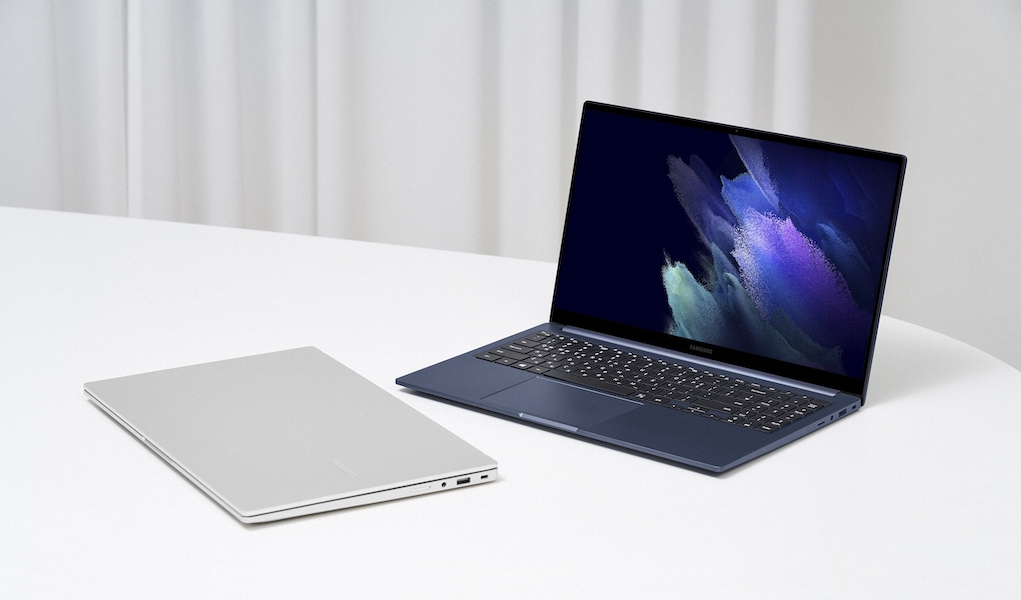
Standout features and functions
The Galaxy Book Smart Switch app should make it easier to transfer everything over from another PC. That’s to get things started, but outside of that, there’s more to try out. Samsung wants to integrate its other devices as much as possible for a cohesive ecosystem. Take a photo on your Galaxy phone, and it appears in the Gallery on the Galaxy Book laptops. The editing tools are even the same to maintain consistency.
You can use up to five mobile apps on the laptop at one time. Samsung Notes sync across devices, so anything you type up can go with you on your phone. The two can also share files and communicate independent of any Wi-Fi connection. And if you have a Galaxy Tab S7+, use it as a second monitor.
Link to Windows/Microsoft Your Phone is what Samsung and Microsoft are calling that. You will need a Microsoft account to make it all work, but only further testing will show how seamless it all is.
There’s new artificial intelligence (AI) that detects the surface beneath the laptop, as well as ambient noise around you, and works to adjust fan noise, temperature and battery usage to try being quieter and more efficient.
The screen itself will also adjust based on what the content is. If you’re watching a movie, working on a document, or editing a photo, the screen calibrates on its own. There’s more where all that came from, but I’d like to test the features first.
Available now for preorder
Look out for a review of one of these devices on the blog, and you can pre-order the one you want. Pay close attention to the model and configurations at Best Buy, as the names and specs do overlap to some degree.

